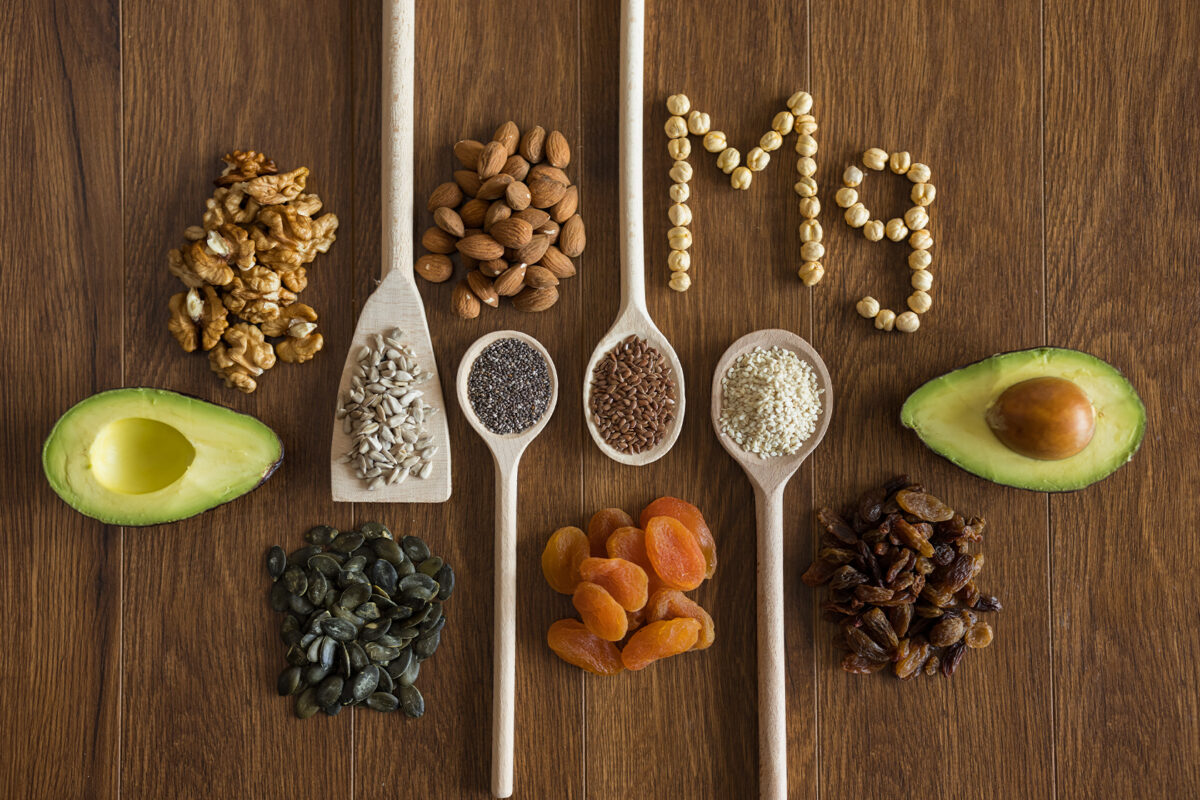By Dr. Tamara Kung, ND
Magnesium is a mineral that is integral to helping us feel and function our best. It helps us build protein, strong bones, normalizes blood pressure and sugar levels, and it also helps keep our hearts beating steadily and healthily!
But did you know that the magnesium is not just important for your overall health but can also be a game-changer for your fitness goals? Magnesium is one of the most essential minerals that play a crucial role in muscle function, energy production, and recovery. So, let’s dive into the scientific benefits of magnesium and how it can help you achieve your fitness goals.
Improves Muscle Function
First up, muscle function. Magnesium is a key component in muscle contraction and relaxation. This means that if you’re deficient in magnesium, you may experience muscle cramps, weakness, and fatigue. By ensuring adequate magnesium levels, you can optimize your muscle strength and endurance.
Magnesium is involved in the production of ATP (adenosine triphosphate), the molecule responsible for powering up every cell in our body. This means that magnesium is essential for maintaining energy levels during your workout and preventing fatigue. So, if you’re feeling sluggish during your workouts, low magnesium levels may be a contributing factor.
Improves Recovery
Magnesium is also crucial for recovery after exercise. It helps to reduce inflammation, decrease muscle soreness, and improve muscle repair. This means that by incorporating magnesium via food or supplement into your post-workout routine, you can recover faster, allowing you to bounce back and stay on top of your fitness routines.
Improves Sleep
Magnesium has also been shown to improve sleep quality, reduce stress and anxiety, and regulate blood sugar levels. All of which can have a significant impact on your fitness journey.
It also has anti-inflammatory qualities. Maintaining appropriate levels will reduce post-workout muscle soreness compared to being deficient.
You can check your serum magnesium levels through a blood test with your healthcare provider or naturopath! 50% of the population are found to be deficient in this mineral, mostly because of the proliferation of fake, processed foods which make our plates look like shades of beige and offer very little magnesium (or any nutrient for that matter).
Recommended daily intake for the average adult is 310-420 mg per day.
One of the best ways to get your daily magnesium dose is through your foods! Real, whole foods are where all your magnificent minerals are found! So why not enjoy deliciousness and get your magnesium in at the same time?
This is a chart of some of the top food sources of magnesium.
| Food | Servings Size | Magnesium (mg) |
| Pumpkin seeds | ¼ cup | 190 |
| Spinach, cooked | 1 cup | 157 |
| Swiss chard, cooked | 1 cup | 150 |
| Tempeh | 1 cup | 134 |
| Quinoa, cooked | 1 cup | 118 |
| Chia seeds | 1 oz (2 tbsp) | 110 |
| Edamame | 1 cup | 100 |
| Brown rice | 1 cup | 84 |
| Cashews | 1 oz | 82 |
| Almonds | 1 oz | 80 |
| Halibut | 3 oz | 90 |
| Mackerel | 3 oz | 82 |
| Salmon | 3 oz | 26-84 |
| Tofu | 1 cup | 74 |
| Dark chocolate | 1 oz | 64 |
| Black beans | ½ cup | 60 |
| Avocado | 1 medium | 58 |
| Peanut butter | 1 oz | 49 |
| Yogurt, plain | 1 cup | 42 |
With so many of us potentially deficient in magnesium, it’s important we learn how we can increase intake to improve our health. Supplementation can be a safe and efficient way to make sure you are covered. Again, speaking with your healthcare provider or naturopath can help you tailor the dose and direct you to the best form for your needs (you may have noticed the variety of magnesium supplements out there and it can feel overwhelming).
Better yet, try out this simple recipe rich in magnesium.
Spinach Salad with Pumpkin Seeds and Feta
Ingredients:
- 4 cups fresh spinach leaves
- 1/4 cup pumpkin seeds
- 1/4 cup crumbled feta cheese
- 1/4 cup thinly sliced red onion
- 2 tbsp olive oil
- 1 tbsp apple cider vinegar
- Salt and pepper, to taste
Instructions:
- In a large bowl, combine the spinach, pumpkin seeds, feta cheese, and red onion.
- In a separate small bowl, whisk together the olive oil, apple cider vinegar, salt, and pepper.
- Drizzle the dressing over the spinach mixture and toss to coat.
- Serve immediately and enjoy!
This recipe is not only delicious, but it’s also a great way to get a dose of magnesium from the pumpkin seeds and spinach. Enjoy this salad as a side dish or add some grilled chicken or tofu to make it a main course.
References:
Bertinato J, Wang KC, Hayward S. Serum Magnesium Concentrations in the Canadian Population and Associations with Diabetes, Glycemic Regulation, and Insulin Resistance. Nutrients. 2017 Mar 17;9(3):296. doi: 10.3390/nu9030296. Retrieved from: https://www.ncbi.nlm.nih.gov/pmc/articles/PMC5372959/
Magnesium fact sheet for health professionals. National Institutes of Health Office of Dietary Supplements.Retrieved from https://ods.od.nih.gov/factsheets/Magnesium-HealthProfessional/



